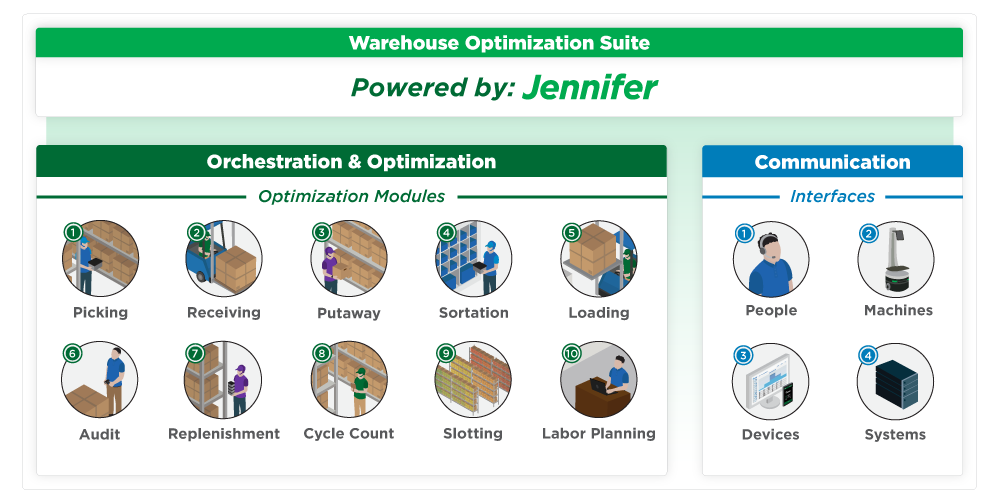Planning and execution are two very distinct activities. Nevertheless, in the DC world inventory and planning systems (warehouse management systems – WMS) have often been used to drive execution of processes on the warehouse floor – that is, the actual work of moving products from point A to point B within a facility and ultimately onto trucks for delivery to customers. The reality, however, is that even the most comprehensive Tier 1 WMSs don’t do a very good job optimizing work execution (warehouse optimization), especially when it comes to the complex, dynamic processes required in today’s multi-channel distribution and fulfillment centers.
As a result of the execution gaps in WMS and host systems, more and more DCs are seeking to improve throughout, efficiency, and productivity by installing other types of software solutions to sequence, manage and orchestrate the detailed material handling work performed by machines and people. These execution systems take two forms.
Warehouse Control Systems
On the one hand, DCs with significant automation systems have installed warehouse control systems (WCS) that optimize the sequence of work and manage the movement of products via conveyors, sorters, AS/RS systems and other automation systems – some WCS companies have started to refer to these systems as warehouse execution systems (WES).
These automated work execution systems typically work with the WMS, without duplicating core WMS inventory management functions. But there is still a missing link, both for DCs that are using automation and those that rely exclusively on manual processes.
Neither WMS nor WCS systems are designed to optimize manual, hands-on activities that still predominate between islands of automation. For example, while Warehouse Control Systems coordinate the movement of picking totes from one warehouse area to another via conveyors, they do not manage or optimize the work done by people picking items off the shelves and putting them into totes on conveyors or carts.
Next Generation Warehouse Optimization Tools
Distribution centers need software systems that can optimize, sequence and orchestrate the detailed activities done by mobile workers and machines simultaneously. That’s exactly what Lucas Systems does: software to orchestrate and optimize resources – people, robots, inventory – across IT and automation systems.
Lucas has been known as a provider of voice systems that optimize hands-on work using voice direction and speech recognition (in addition to barcode scanning, device screens and other mobile technologies).
Beyond improving the mechanics of hands-on tasks, for all of our 23+ years we have been providing application software that optimizes workflows and processes so that DCs could get the full benefit of speech recognition and other mobile technologies.
So instead of simply voice-enabling existing WMS-driven processes, our focus is on process optimization beyond the capabilities of the WMS or WCS. We supplement a DC’s inventory planning systems (and complement WCS systems) to optimize the work done by people and machines, together.
What are the Benefits?
- Optimize Performance – Increase throughput and efficiency, reduce labor costs, and improve order and inventory accuracy with AI-based optimization and voice-directed adaptive workflows.
- Make Smarter Decisions – Improve decision-making and management effectiveness by giving managers real-time visibility and control of resources, work and labor, both within and across sites.
- Create Needed Agility – Incorporate decades of process innovations that adapt to your DC and evolve to meet future demands without costly and time-consuming customization or integration.
- Be Future Ready – Seamlessly integrate next-generation technology with enterprise software, robotics and warehouse automation, reducing the costs and risks of change.
If you’d like to learn more about Warehouse Optimization Solutions and how they’ve helped hundreds of DCs transform their operations, download our solution brochure and schedule a call with one of our industry experts.






